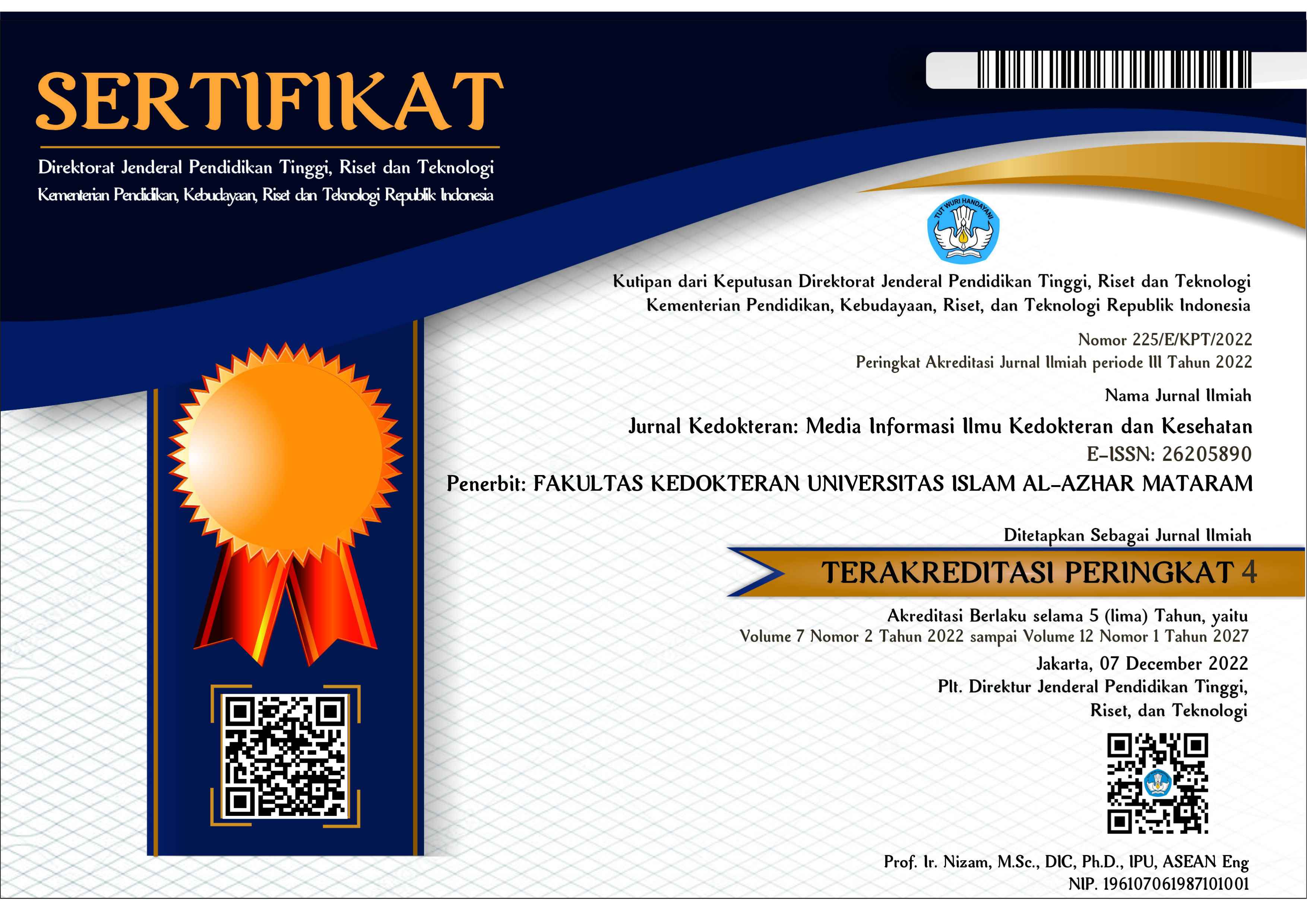HUBUNGAN UKURAN DEFEK OMPHALOCELE TERHADAP KELAINAN KONGENITAL PENYERTA
Abstract
Background: Omphalocele is often associated with the presence of other congenital anomalies. One study says that a small of defect omphalocele is often accompanied by intestinal disorders and have a better prognosis. Based on this study the researcher wants to review the relationship between the size of omphalocele defect and the presence of associated congenital anomaly in Hasan Sadikin Hospital. Methods: This is a retrospective cross-sectional study. All patient with omphalocele between January 2007 – March 2012 were included in this study. Data collected were patient demographics, size of omphalocele defect and congenital anomalies identified. In this study, patients were designated as those with small (4 cm and less) or large (greater than 4 cm) defect omphaloceles. This study analyzed correlation between size of defect with associated anomaly using Fisher exact test and p < 0.05 is considered to be significant. Results: There were 52 omphalocele cases (24 girls, 28 boys), median birth weight 2710gr (range 1300gr–4000gr). Twenty seven patients were classified as small defect, with 25 classified as large defect. Anomaly found in the small defect groups consists of facial anomaly (7%); cardiac anomaly (7%); intestinal disorder (22%,P=0,02) include patent omphalomesentericus duct, anorectal malformation and cloaca extrophi; limb anomaly (7%). Meanwhile, anomalies identified in the large defect group consist of facial anomaly (8%); cardac defect (32%) include dextrocardi and tetralogi Fallot; limb anomaly (16%).In this study, cardiac defects was significantly higher in the large defect group, meanwhile intestinal diorder is statistically significant in small defect groups. Conclusion: Small defect omphalocele correlates with an increased prevalence of associated gastrointestinal anomalies and a lower prevalence of cardiac anomalies.
All articles published in Jurnal Kedokteran: Media Informasi Ilmu Kedokteran dan Kesehatan are licensed under a Creative Commons Attribution-Noncommercial 4.0 International license, this license allows anyone to compose, improve, and create derivative works for non-commercial purposes. in Jurnal Kedokteran: Media Informasi Ilmu Kedokteran dan Kesehatan is recognized as the original publisher, and a link to the license is provided. Changes must also be indicated.
Copyright and publishing rights to articles are held by their respective authors, without limitation. However, a non-exclusive license is granted to Jurnal Kedokteran: Media Informasi Ilmu Kedokteran dan Kesehatan to publish the article and identify itself as the original publisher.
By submitting to Jurnal Kedokteran: Media Informasi Ilmu Kedokteran dan Kesehatan the authors acknowledge that any third party may use their articles to the extent permitted by the CC BY -NC 4.0 license, if their articles are published.














